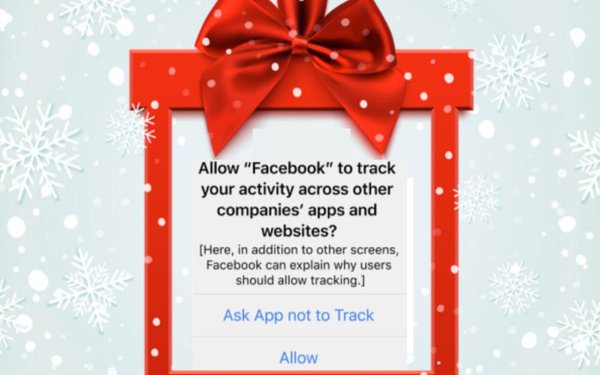
Much coverage has already been
devoted to Facebook’s advocacy campaign attacking Apple’s new consumer data privacy protocol, but it’s important to note that this is primarily about how people interface with media,
and who controls that. In the case of this battle, it’s primarily about a mobile interface, and the fact that Apple will begin alerting its customers that they have to opt into (not out of)
having their personal data tracked, collected and used for marketing purposes, including ones that Facebook and other mobile app marketers have been scraping from Apple users.
Apple,
of course, is not the first interface company to adopt this protocol. Certain browsers, most notably Mozilla’s Firefox, promotes a similar default. But given the volume of consumers accessing
mobile via an Apple device, and the fact that so many apps have built their business models around unconsciously exploiting those consumers’ data, it’s not surprising that the biggest
among them -- Facebook -- would launch a Holy War over it.
advertisement
advertisement
I’ve already written about the hypocrisy of Facebook doing this, given that it has
operated as an exploitative “walled garden” for years, without providing consumers or brands reasonable transparency, but now that the tables have been turned... well, you get the
idea.
The purpose of this column is to offer some advice for marketers and media planners who might want some practical how-tos for adjusting to the change. These steps were provided
courtesy of Stephanie Gaston, director of performance at Healthline Media, but I thought they were smart enough to pass on:
- Limit retargeting: Since you have to
know what a user did in order to retarget them elsewhere, and this data is no longer being passed along, retargeting is not going to be a reliable strategy. Find other ways to drive impact and return
on advertising spend.
- Embrace contextual: This probably feels like we're turning back the clock by 25 years. But contextual targeting has quietly gotten
more sophisticated in the years it subsisted in the shadows of cookies and device IDs. Contextualization is now more refined and automated, and can be aggregated for scale. Beware, though, contextual
media is considered premium and comes at relatively higher CPMs than audience targeting, for relatively higher performance.
- Rethink measurement: Without
user tracking, we lose the ability to match ad exposure to user profile, future digital behavior, and offline actions. Instead, we're left with clicks as a measure, but we all know that users rarely
click on digital ads. Clearly, we need new ways to evaluate media. Thankfully, statistical models for measurement exist, where limited first-party data, panel data, and market research can be
extrapolated to provide surrogates. Start interviewing some new partners.
- Hold partners accountable: While we're all aware of these issues, it's easier to
conduct business as usual in the hopes of squeezing as much revenue from cookies and device IDs before they hit the cliff. The problem with pushing off curative strategies is that we'll end up with
very little runway to learn from. So, challenge your advertising and measurement partners to acknowledge the issue, address a learning plan, pilot approaches and gather benchmarks, and create a
post-privacy vision.